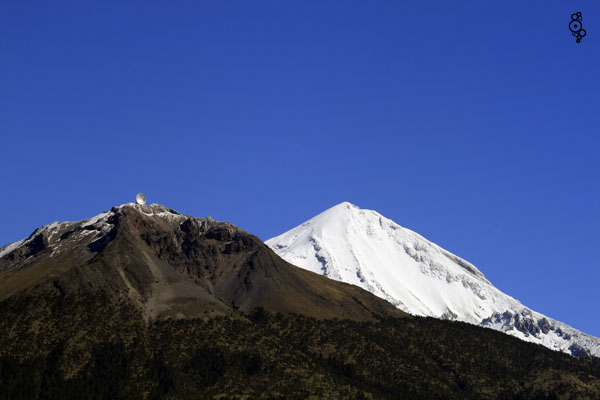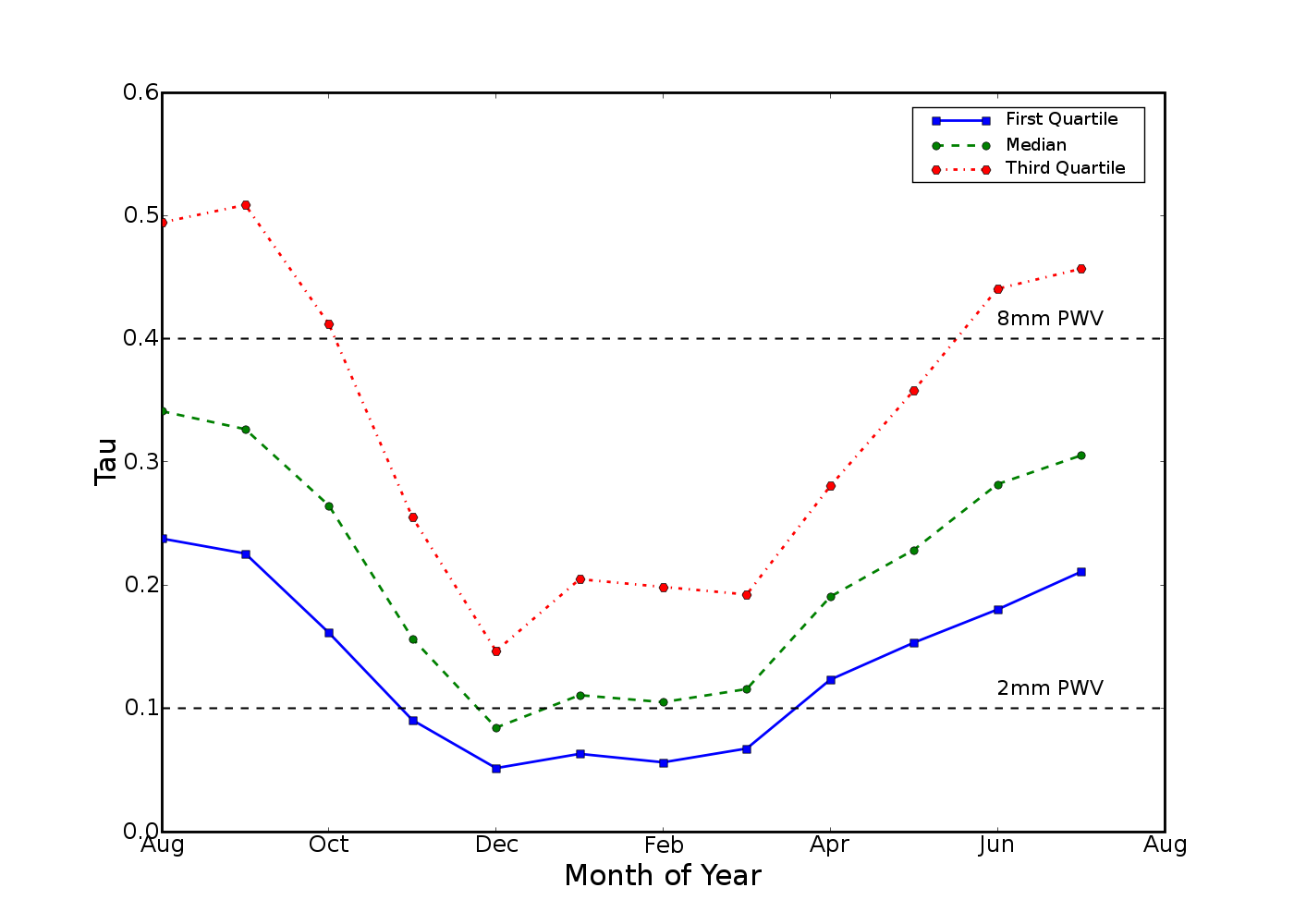LMT site
The Large Millimeter Telescope (LMT) is located on the
summit (at an altitude of 4,600 m or 15,000 ft) of the dormant volcano
Sierra

Negra, located within the National Park Pico de
Orizaba in the Mexican state of Puebla, ~100 km east of the city of Puebla and the Instituto Nacional de Astrofísica, Óptica y
Electrónica (INAOE). The proximity of Volcán Sierra Negra
to the LMTO at INAOE (2 hours by road), and major Mexican cities and international airports
(Puebla 85km - 2hours; Mexico City 250km - 4 hours) allows for good
logistical support at the site from the LMTO staff at both INAOE and
UMASS.
The LMT site (+18º 59' 06" N; 97º 18' 53" W) provides
good access to both northern and southern hemisphere sources.
Meteorological monitoring
The LMT meteorological station continuously monitors the local weather
and atmospheric conditions at intervals of a few minutes. Measurements
of temperature, pressure, humidity, wind-speed and direction, and
atmospheric transmission (opacity) at 215 GHz are recorded on-site,
transferred and archived at INAOE. Volcán Sierra Negra is
located in tropical latitudes, only 100km west of the Gulf of
Mexico, and hence the LMT site experiences seasonal weather variations
between the "wet" summer months (June - September) and the "dry" winter
months (October - May).
The LMT Project has compiled extensive data on the radiometric conditions at the site. Between 1997 and 2008,
the 215 GHz (1.4 mm) atmospheric opacity above the LMT site was recorded
every 5 minutes from sky-dips over an elevation range of 20-75 degrees
using one of two radiometers built at UMASS, and maintained at INAOE.
These opacity measurements demonstrate
that the LMT site provides
excellent millimeter wavelength transmission with a median opacity
τ(
215 GHz) < 0.12 (1st quartile
τ
<
0.07 in the dry winter months). Occasional 340 GHz
(850μm) observations will also be possible during the best conditions
(10% of the time) during this period, when τ
(340 GHz) is < 0.4.
During the summer months Volcán Sierra Negra remains an excellent 3 mm site.

Generally the meteorological conditions (wind, temperature,
precipitation) at the LMT site are relatively benign given the
high altitude. For antenna performance, the most critical factor is the
wind speed that distorts the surface of the dish and affects the
antenna pointing. The median wind-speed is 6 m/s, and the
median temperature is around 0° C with the diurnal variation
of about 5° C. The LMT is designed to
have a pointing accuracy of < 1 arcsecs in wind conditions
< 10 m/s, which is 90% of the time.


 Negra, located within the National Park Pico de
Orizaba in the Mexican state of Puebla, ~100 km east of the city of Puebla and the Instituto Nacional de Astrofísica, Óptica y
Electrónica (INAOE). The proximity of Volcán Sierra Negra
to the LMTO at INAOE (2 hours by road), and major Mexican cities and international airports
(Puebla 85km - 2hours; Mexico City 250km - 4 hours) allows for good
logistical support at the site from the LMTO staff at both INAOE and
UMASS.
Negra, located within the National Park Pico de
Orizaba in the Mexican state of Puebla, ~100 km east of the city of Puebla and the Instituto Nacional de Astrofísica, Óptica y
Electrónica (INAOE). The proximity of Volcán Sierra Negra
to the LMTO at INAOE (2 hours by road), and major Mexican cities and international airports
(Puebla 85km - 2hours; Mexico City 250km - 4 hours) allows for good
logistical support at the site from the LMTO staff at both INAOE and
UMASS.